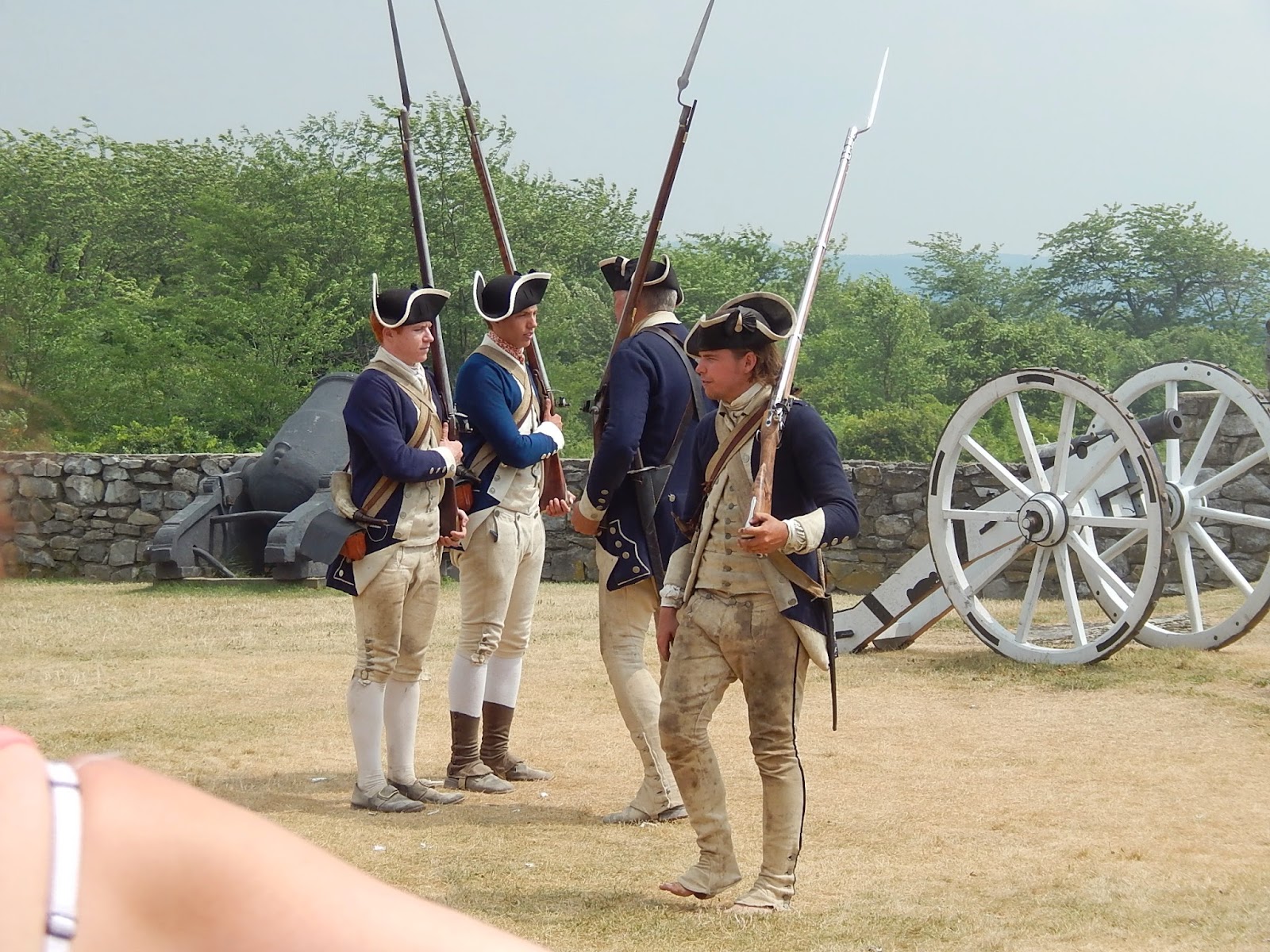Warrensburg, New York High 86 Low 57
Today we decided, with the help of some readers, to go and
see Fort Ticonderoga. It was a lot nicer Fort to visit than Fort William Henry.
The site controlled a river portage alongside the mouth of the rapids-infested La Chute River in the 3.5 miles (5.6 km) between Lake Champlain and Lake George and was strategically placed in conflicts over trade routes between the British-controlled Hudson River Valley and the French-controlled Saint Lawrence River Valley. The terrain amplified the importance of the site. Both lakes were long and narrow, oriented north–south, as were the many ridge lines of the Appalachian Mountains extending as far south as Georgia, creating the near-impassable mountainous terrains to the east and west of the Great Appalachian Valley that the site commanded. The name "Ticonderoga" comes from the Iroquois word tekontaró:ken, meaning "it is at the junction of two waterways".[3]
During the 1758 Battle of Carillon, 4,000 French defenders were able to repel an attack by 16,000 British troops near the fort. In 1759, the British returned and drove a token French garrison from the fort merely by occupying high ground that threatened the fort. During the American Revolutionary War, the fort again saw action in May 1775 when the Green Mountain Boys and other state militia under the command of Ethan Allen and Benedict Arnold captured it in a surprise attack. Cannons captured were transported to Boston where their deployment forced the British to abandon the city in March 1776. The Americans held the fort until June 1777, when British forces under General John Burgoyne again occupied high ground above it and threatened the Continental Army troops, leading them to withdraw from the fort and its surrounding defenses. The only direct attack on the fort took place in September 1777, when John Brown led 500 Americans in an unsuccessful attempt to capture the fort from about 100 British defenders.
The British abandoned the fort following the failure of the Saratoga campaign, and it ceased to be of military value after 1781. It fell into ruin, leading people to strip it of some of its usable stone, metal, and woodwork. It became a stop on tourist routes of the area in the 19th century. Its private owners restored the fort early in the 20th century. A foundation now operates the fort as a tourist attraction, museum, and research center.
The first thing we watched was a fife and drum demonstration.
All the musicians wore clothing of the 1776 time frame. I thought they must be
hot in the wool coats (we were suffering from all the heat). When I asked one
of the people at the Fort about it, He told me, yes they suffer. He told me, you might
notice some of them dragging because of the heat.
Just outside the gate, there was a demonstration set up
about how the soldiers of that time might cook. We found out later that they were
actually cooking lunch for the workers in the Fort. When they ate they all used
the utensils that would have been used in 1776.
We had a tour, where we were given a lot of information
about the history of the Fort. The young man that gave the tour told us how the
Fort had been destroyed 3 times and was last rebuilt a little over a hundred
years ago. He told us that every year, a different year is highlighted. This
year it is 1776, last year was 1757. The reason for this, he told us, was so
that if you ever come back, you will get a little different perspective of the
history. There were lots of displays throughout the inside of the buildings of the Fort.
One building inside the Fort looked different than all the
rest, and we were told that it was rebuilt using materials and stone work that
was thought to be more like the Fort was originally.
Inside this building, it was completely modern with a large
auditorium, rest rooms, class rooms, and even had an elevator. We watched a DVD
which gave a brief history of the Fort and surrounding area. It told about some
of the things that happened during the Revolutionary War.
In the basement, there was a display of four sets of
clothing from the same era, and we were told it was actually from that time.
We both enjoyed the Fort. We also went down to the Kings
Garden, but I will wait until tomorrow to tell about it.
Thanks for visiting.


































No comments:
Post a Comment